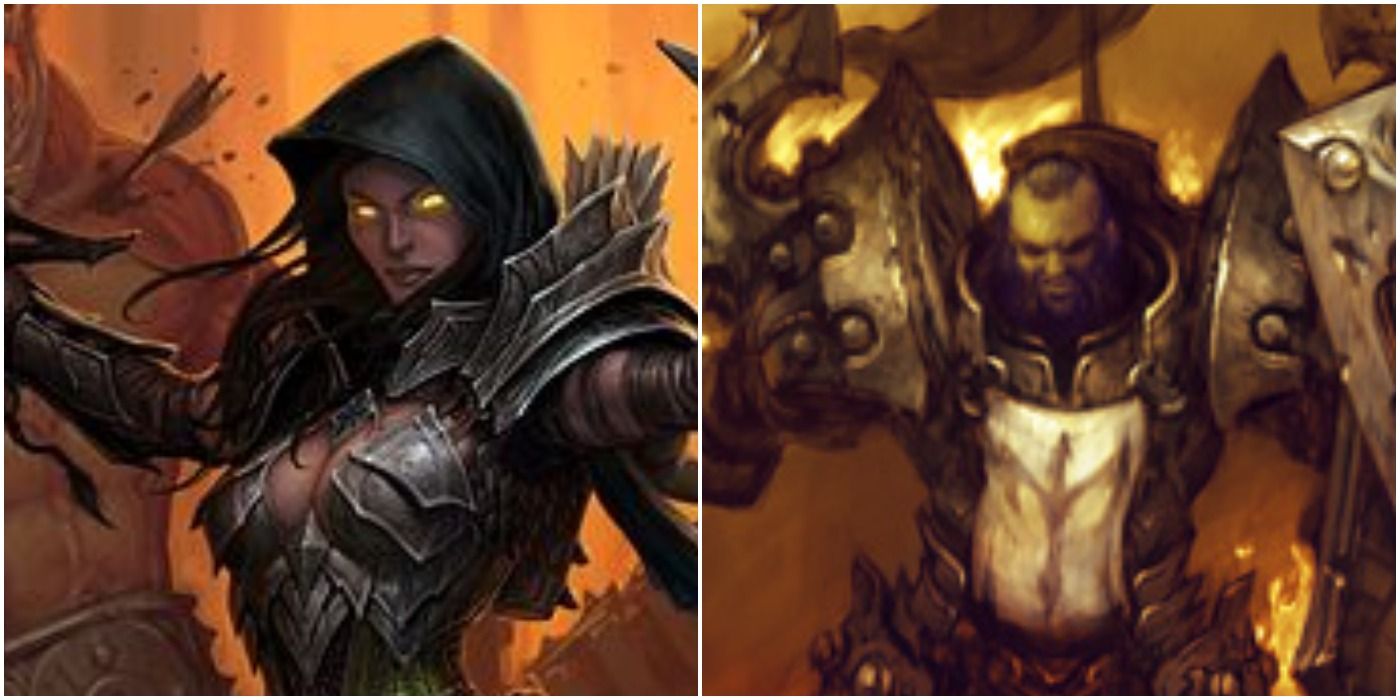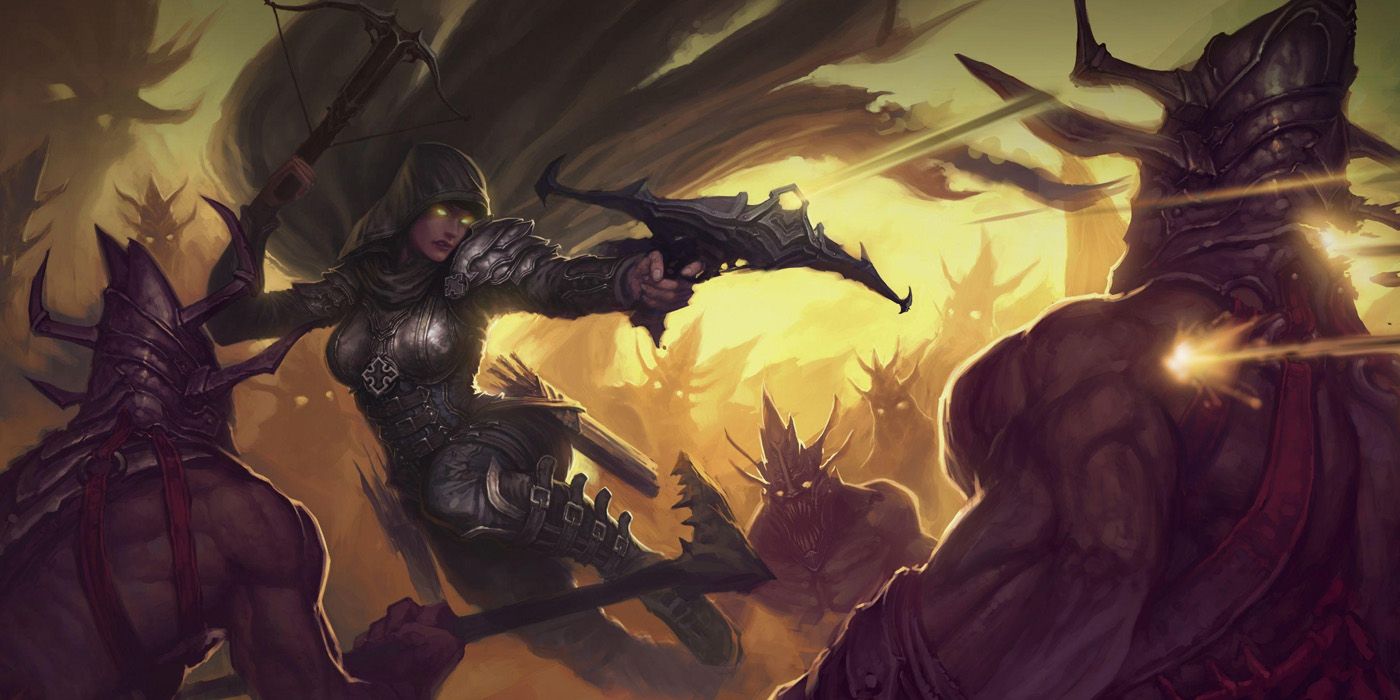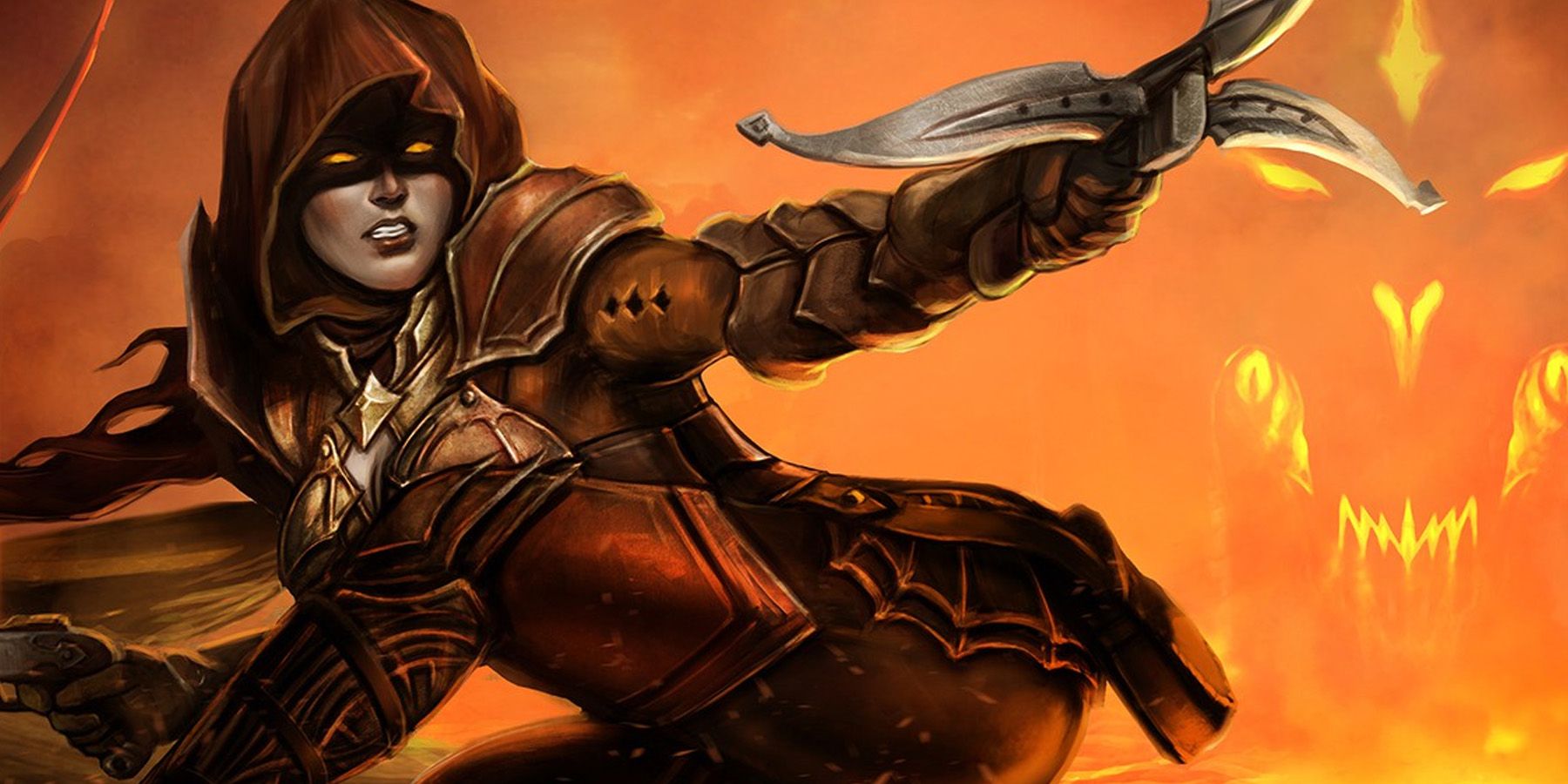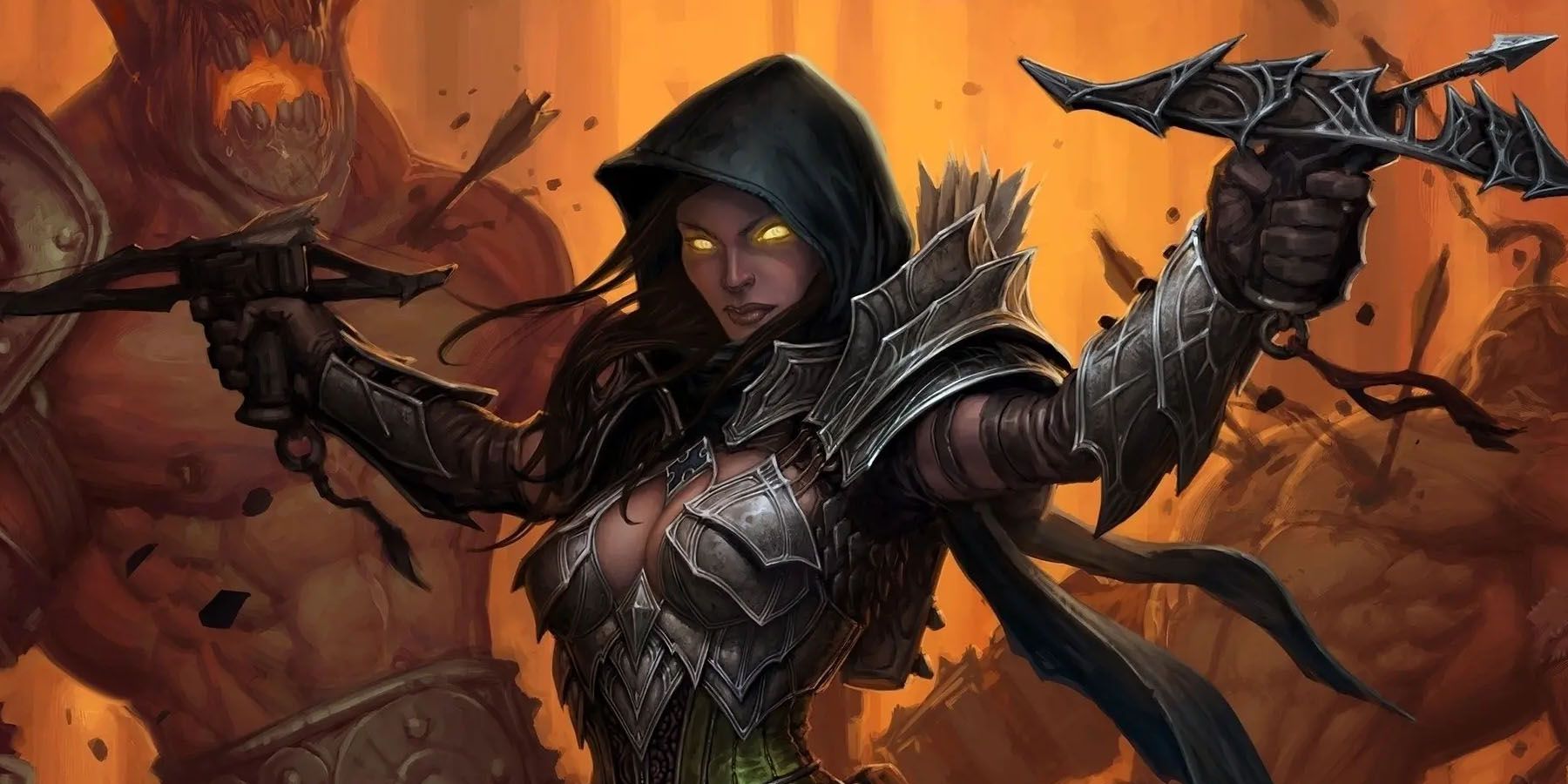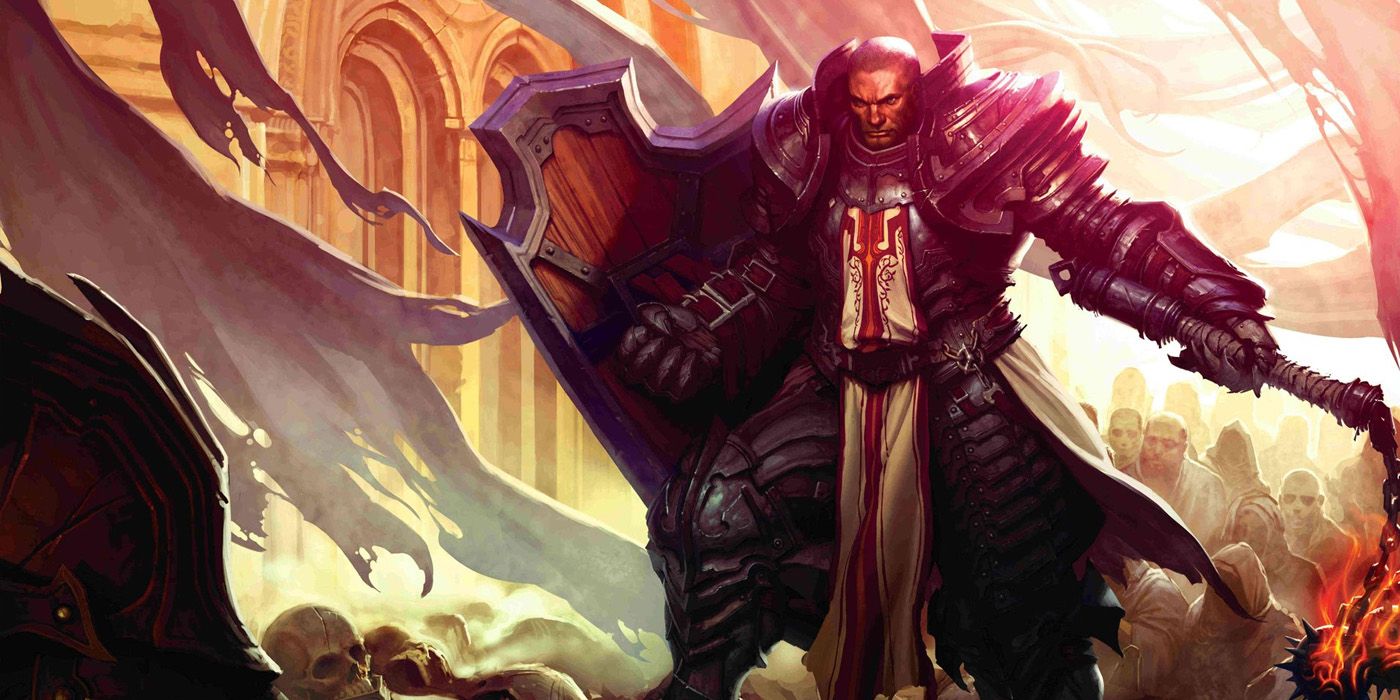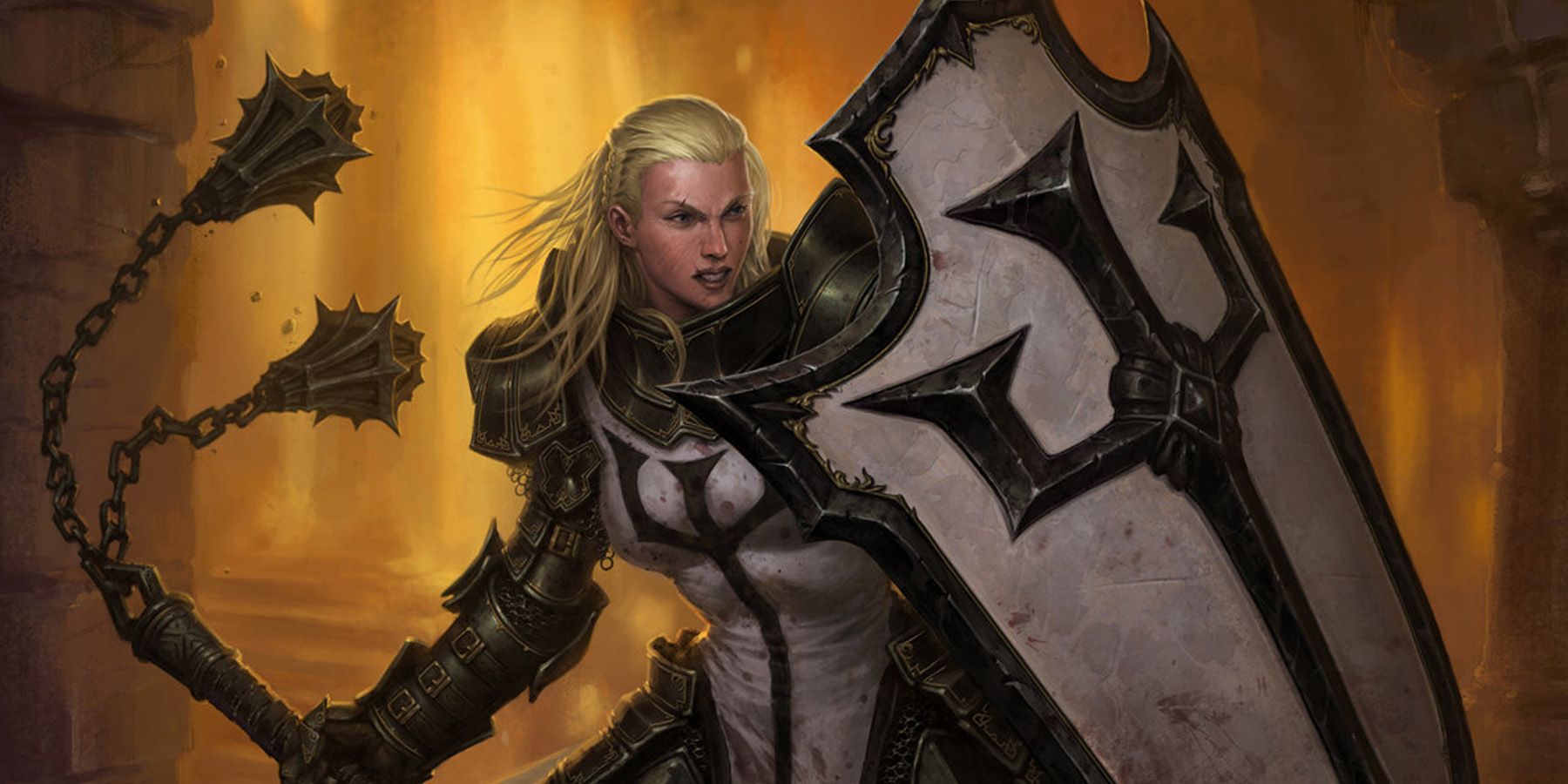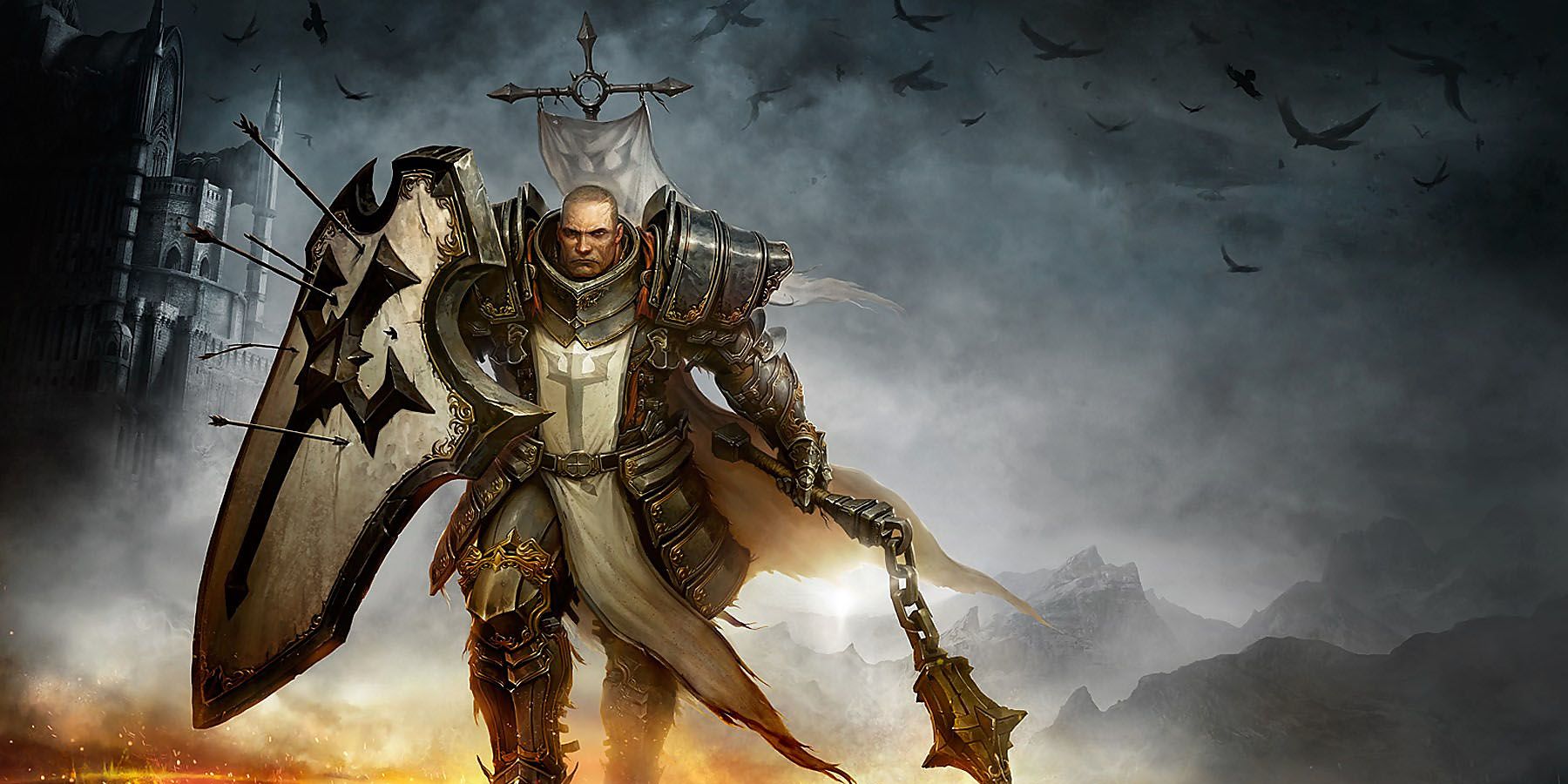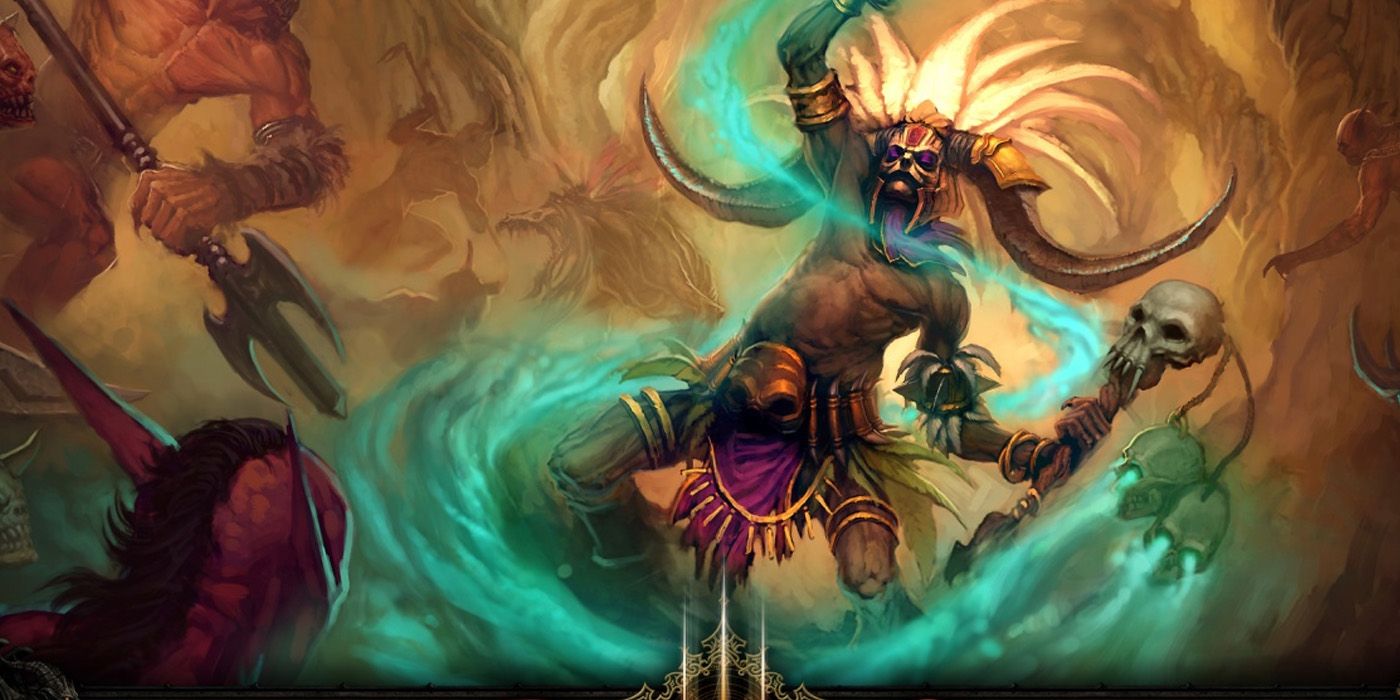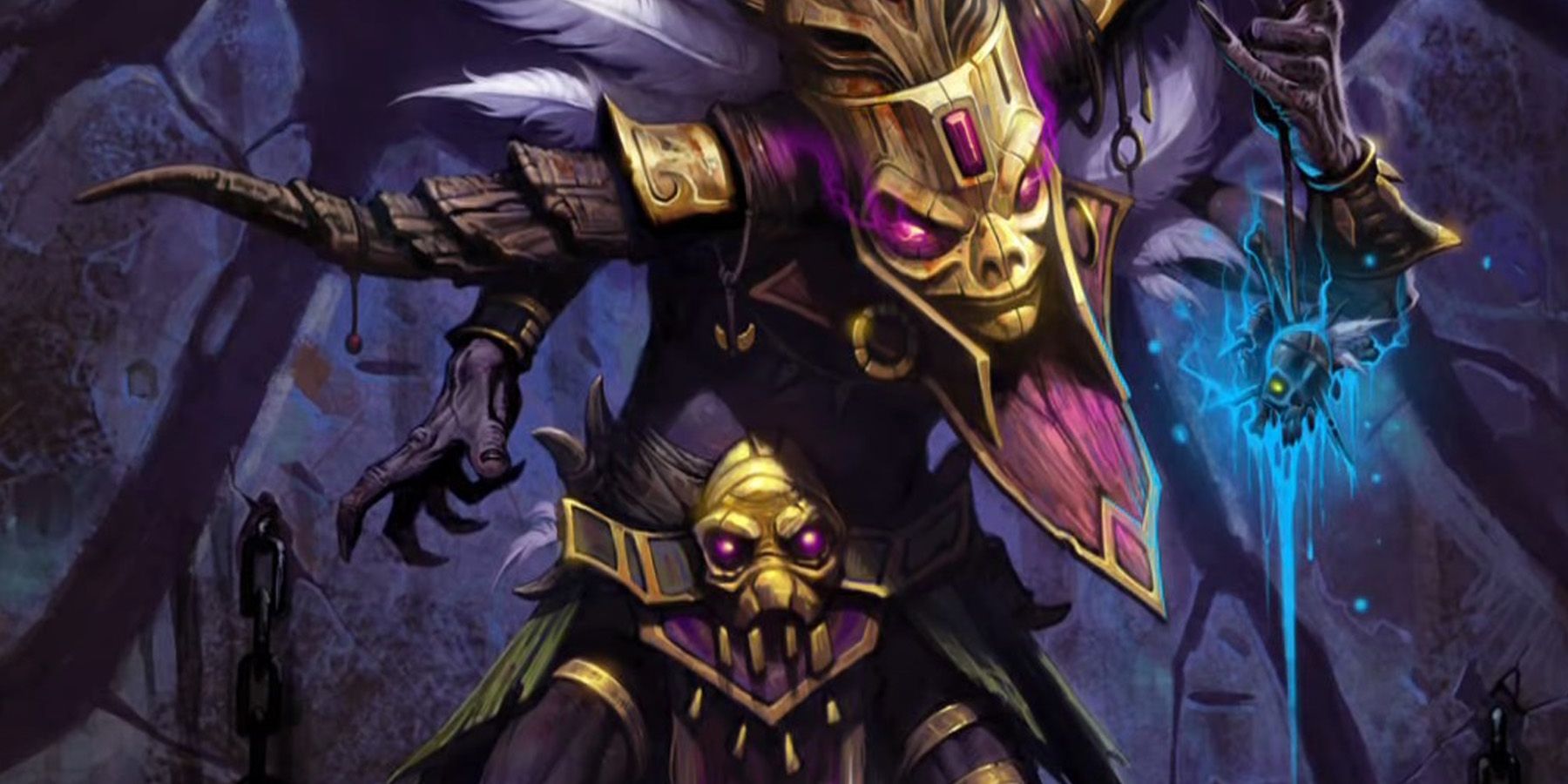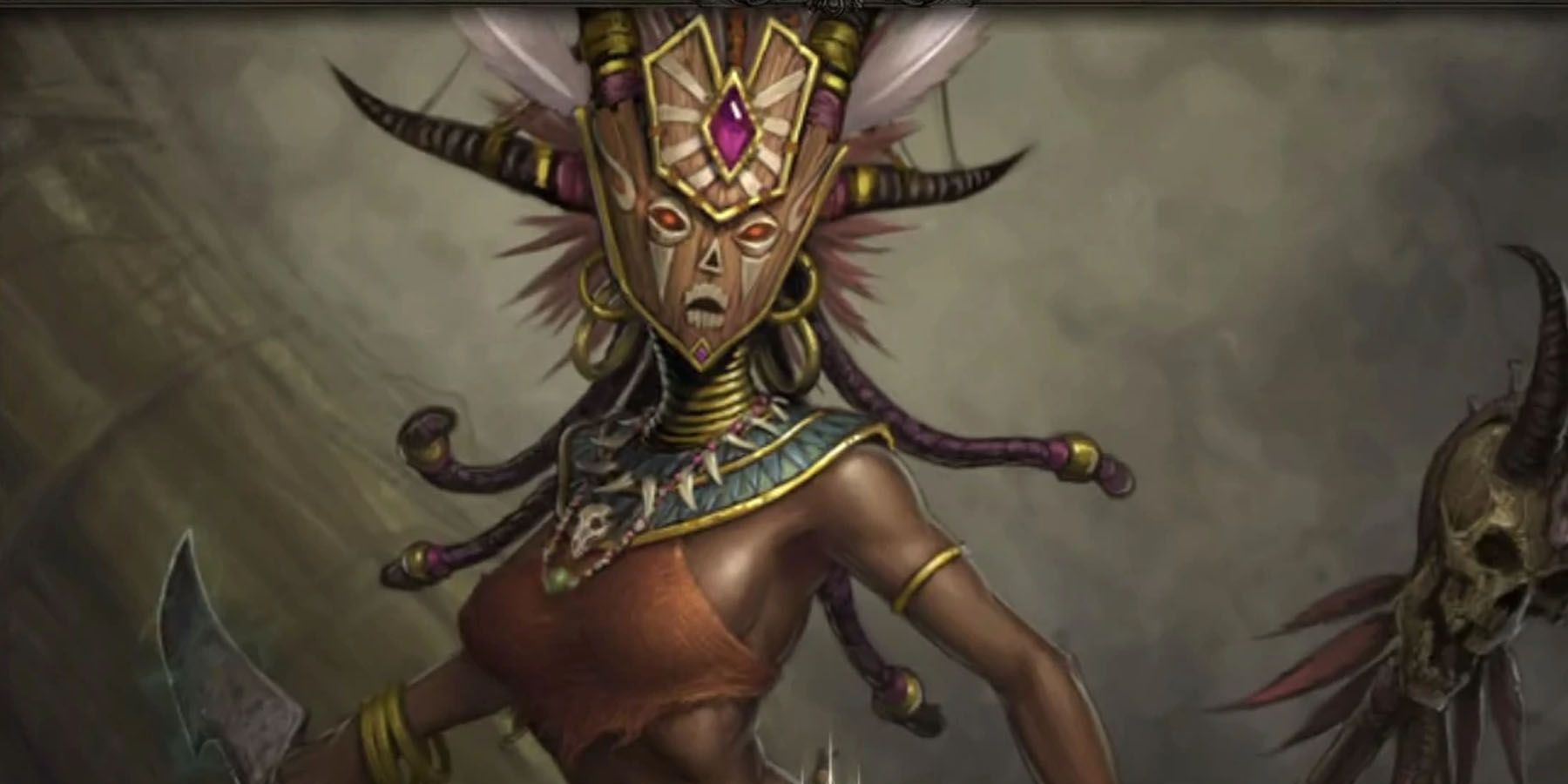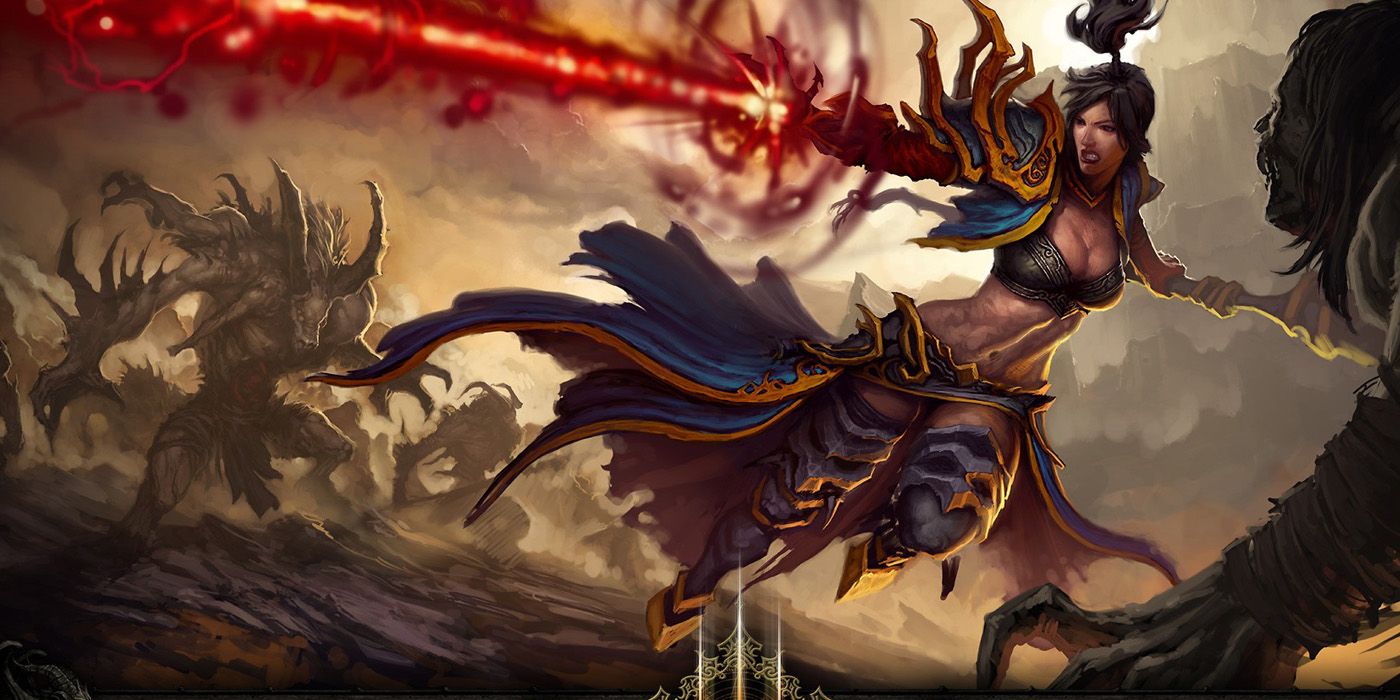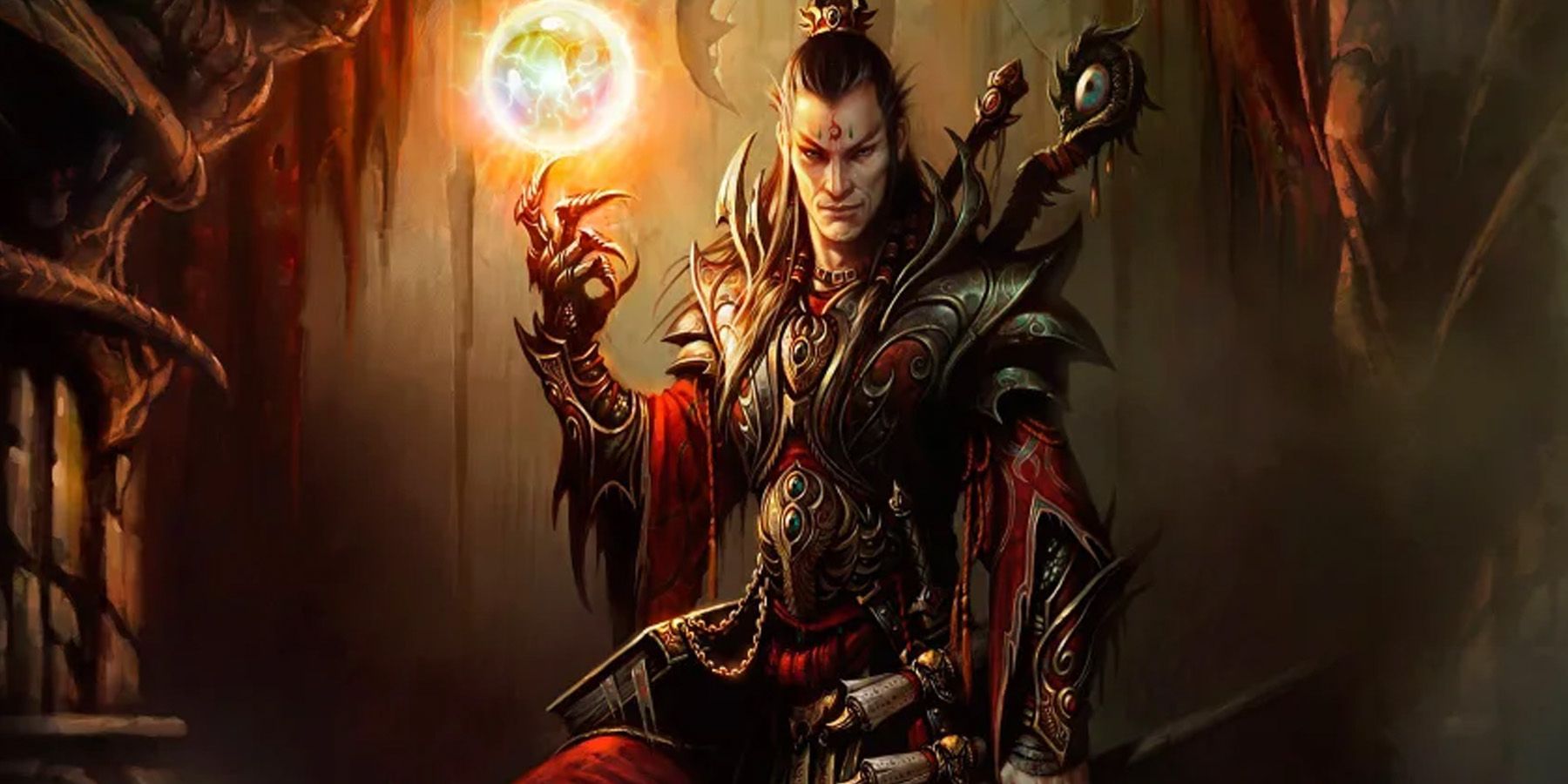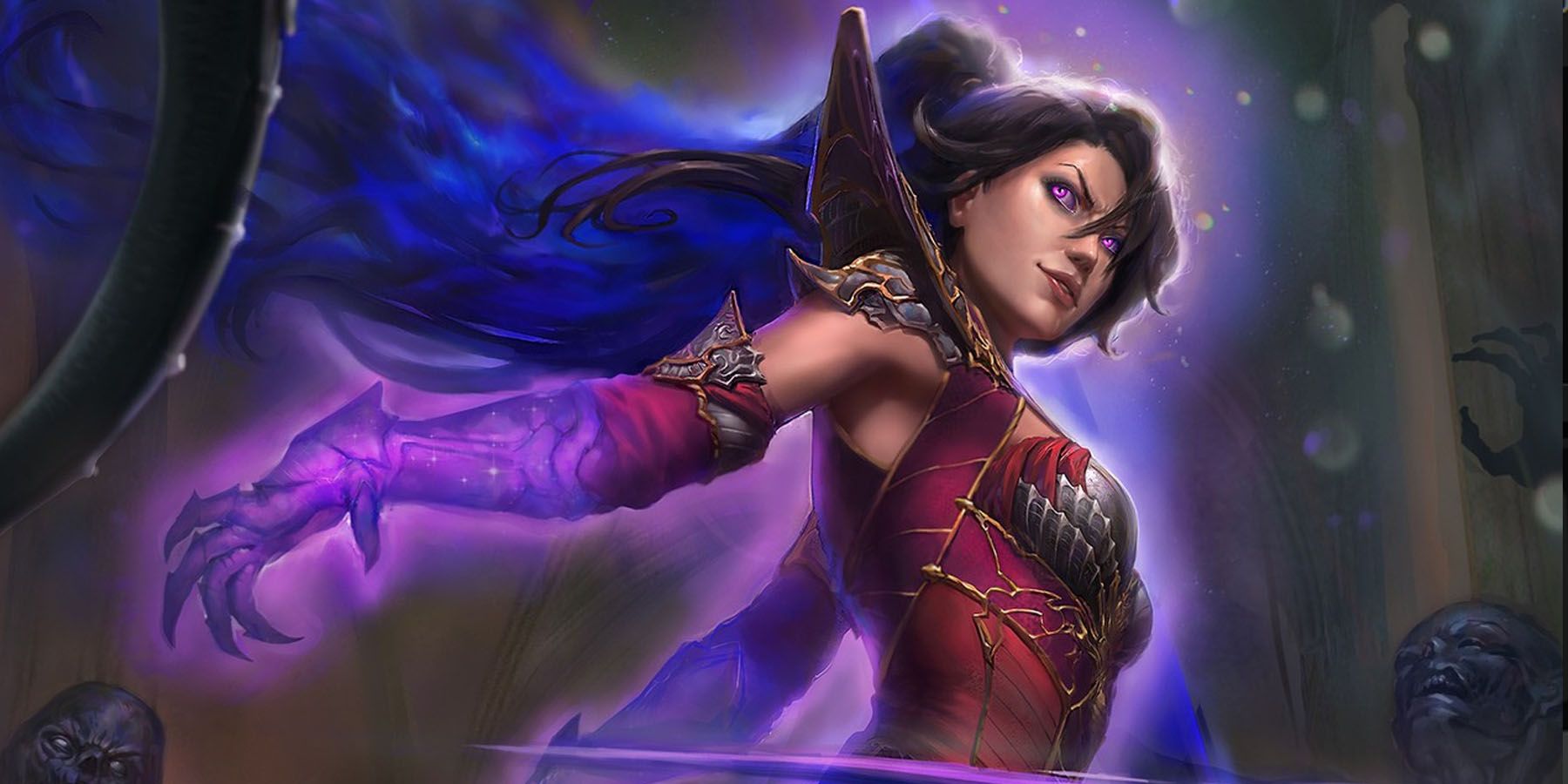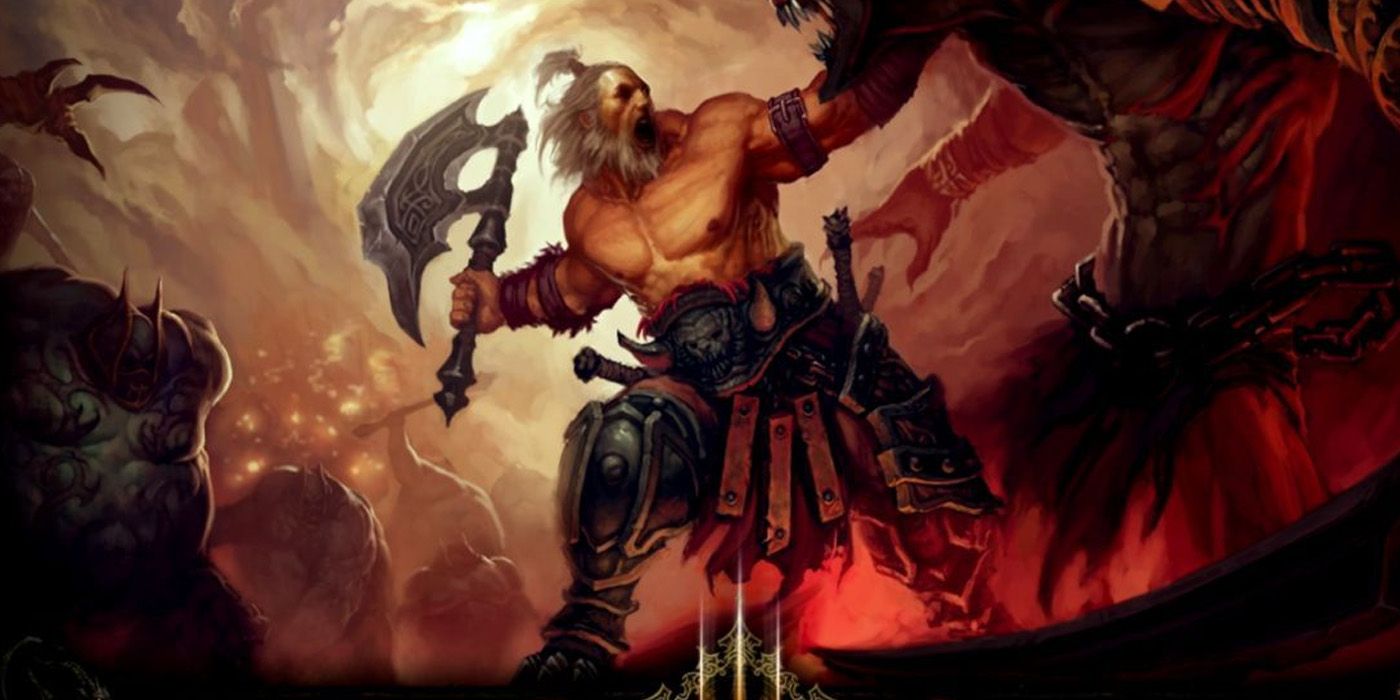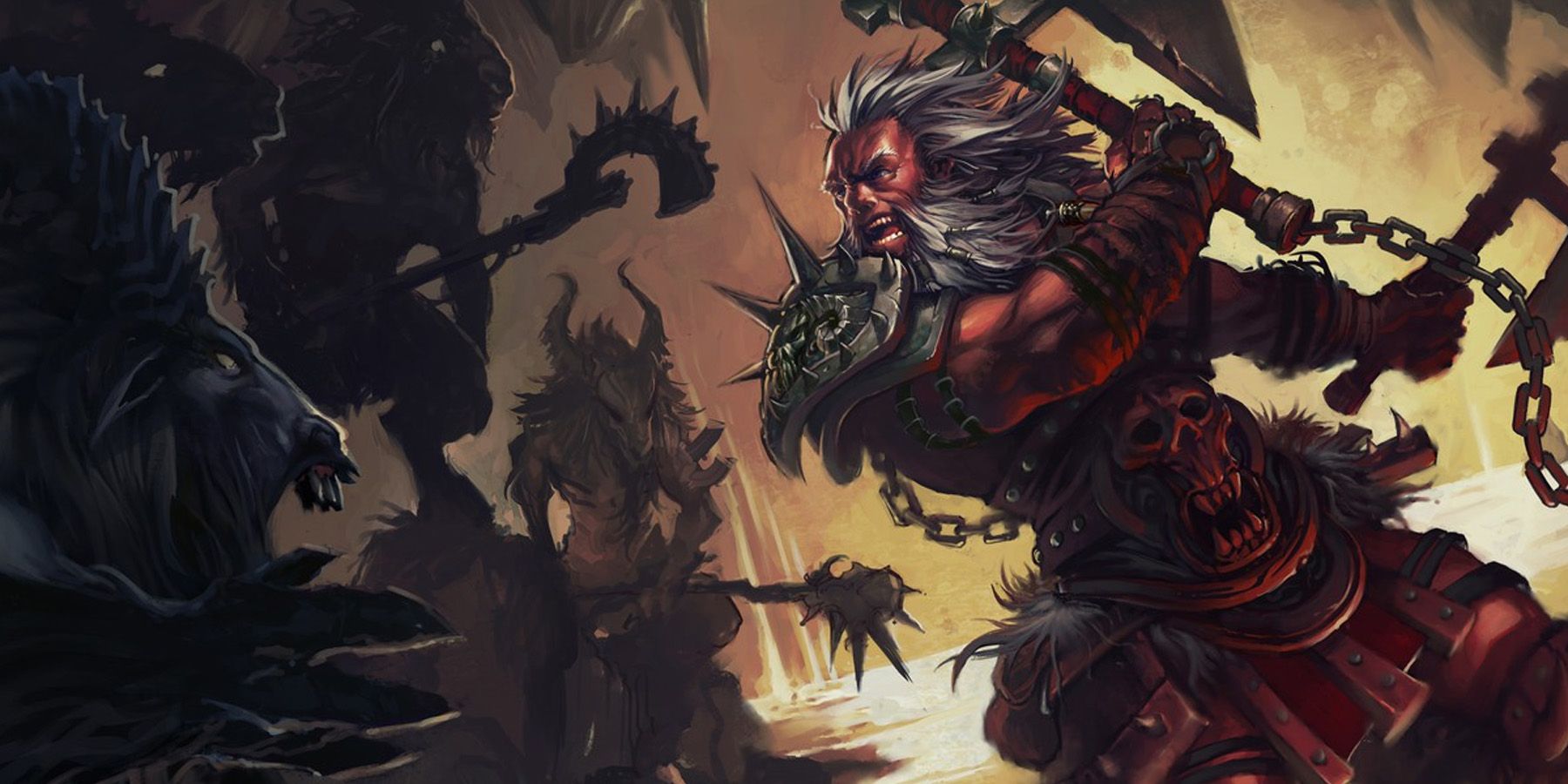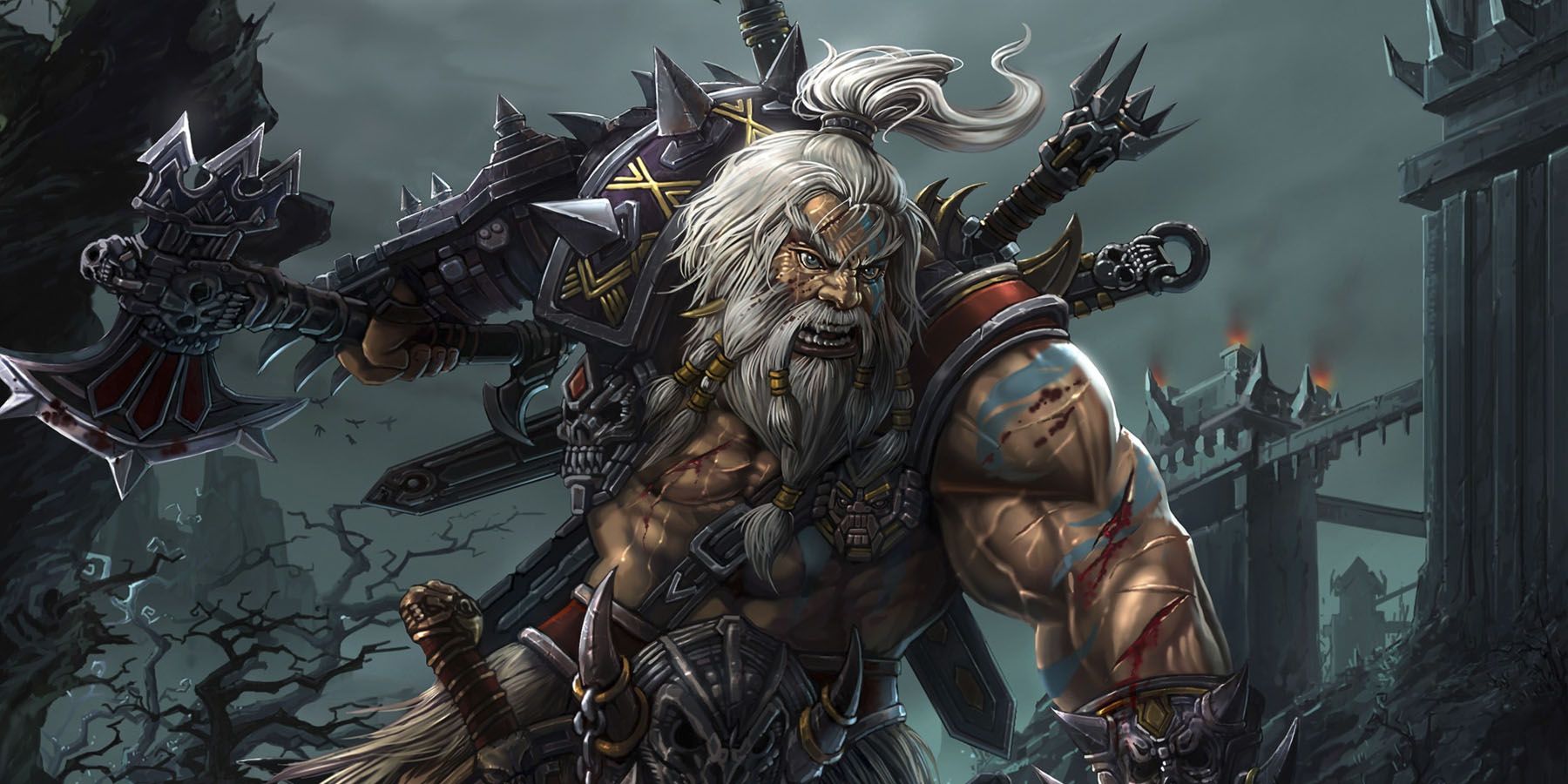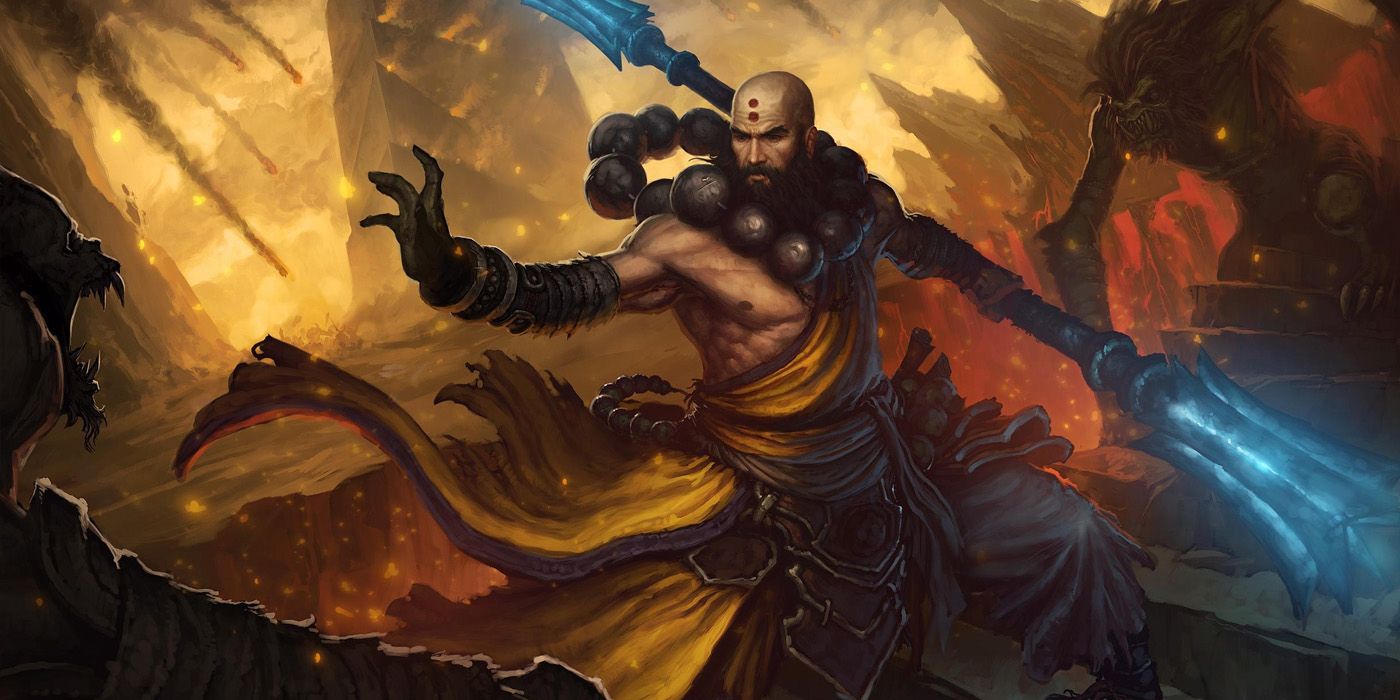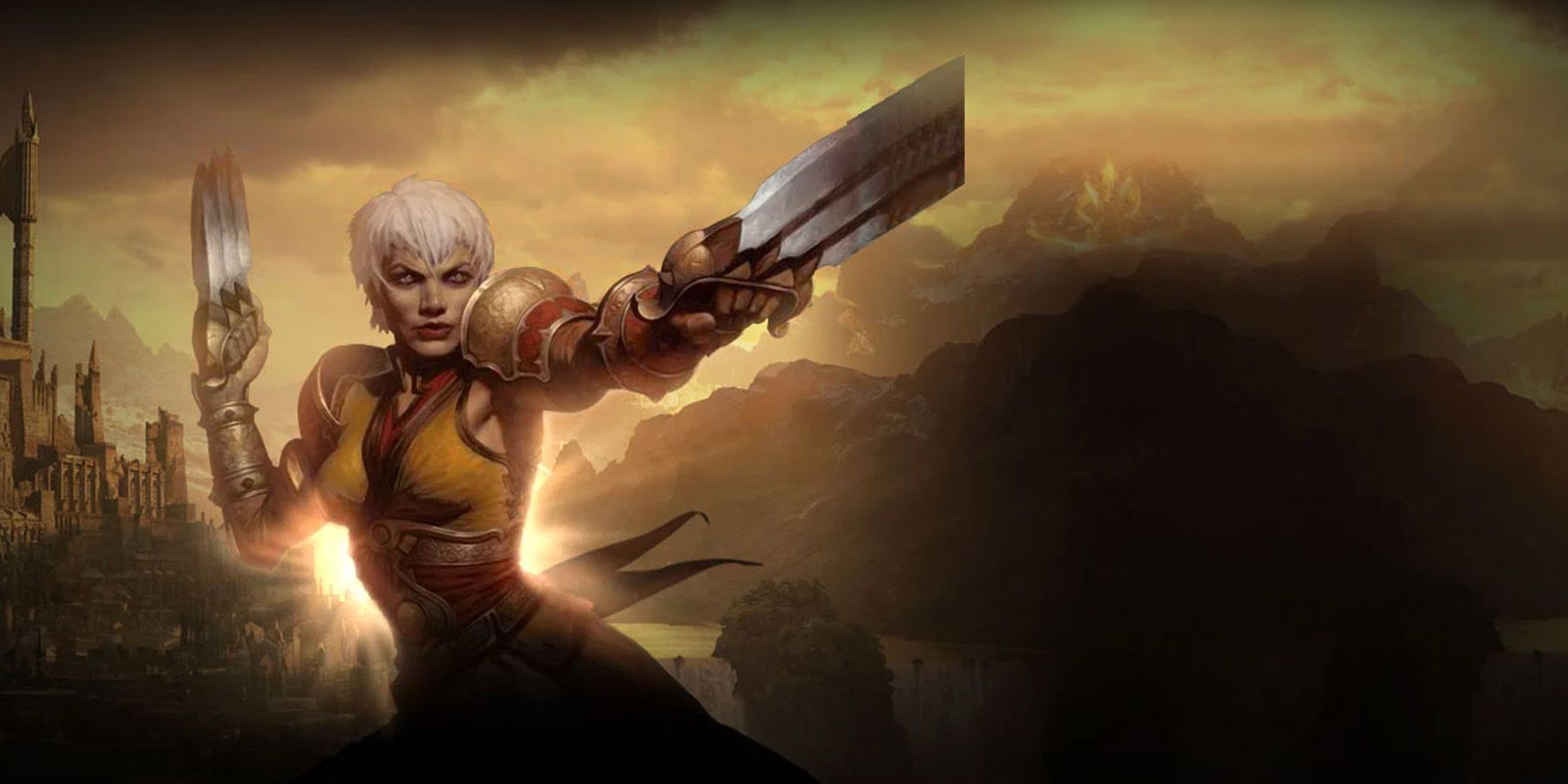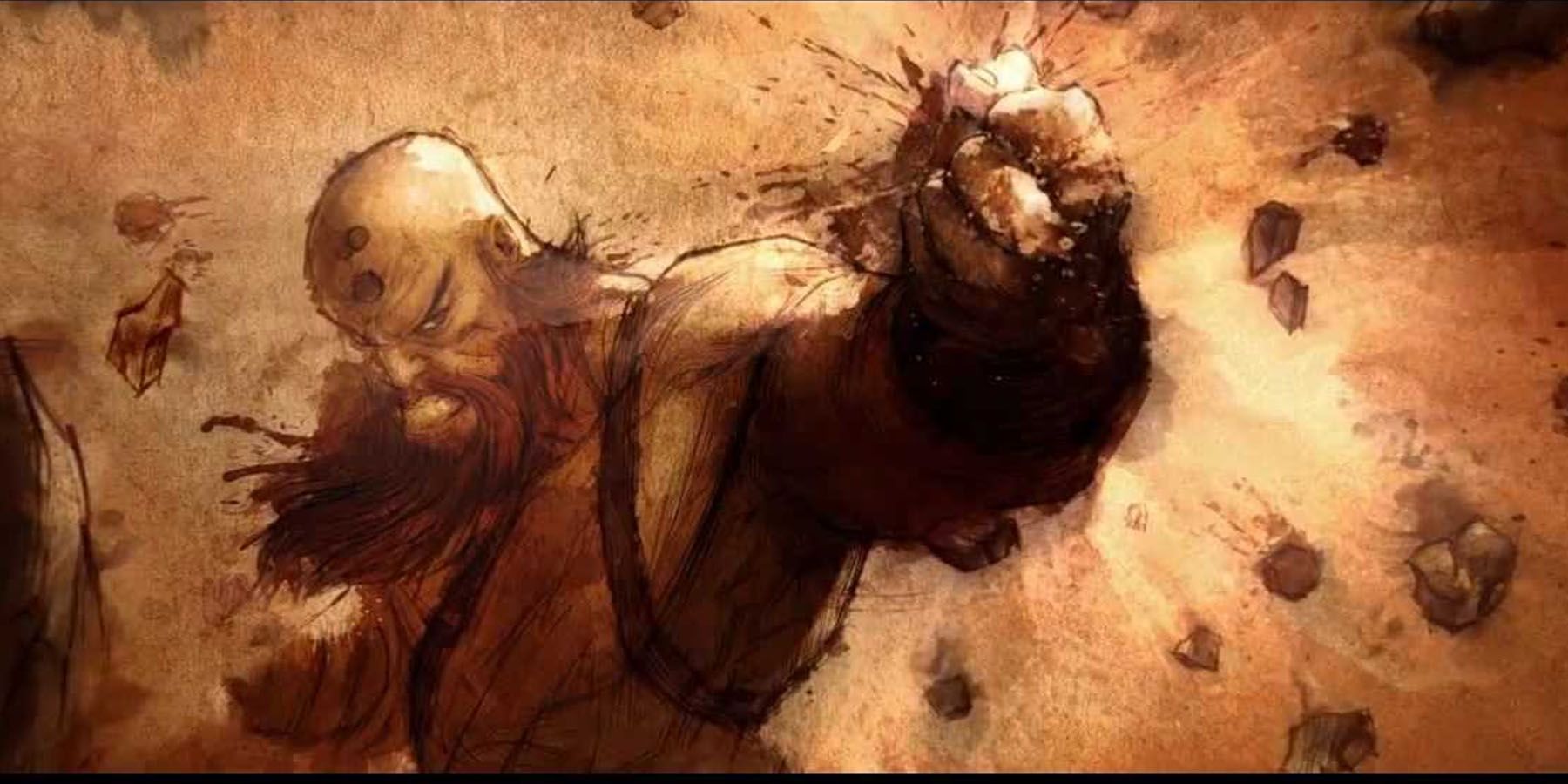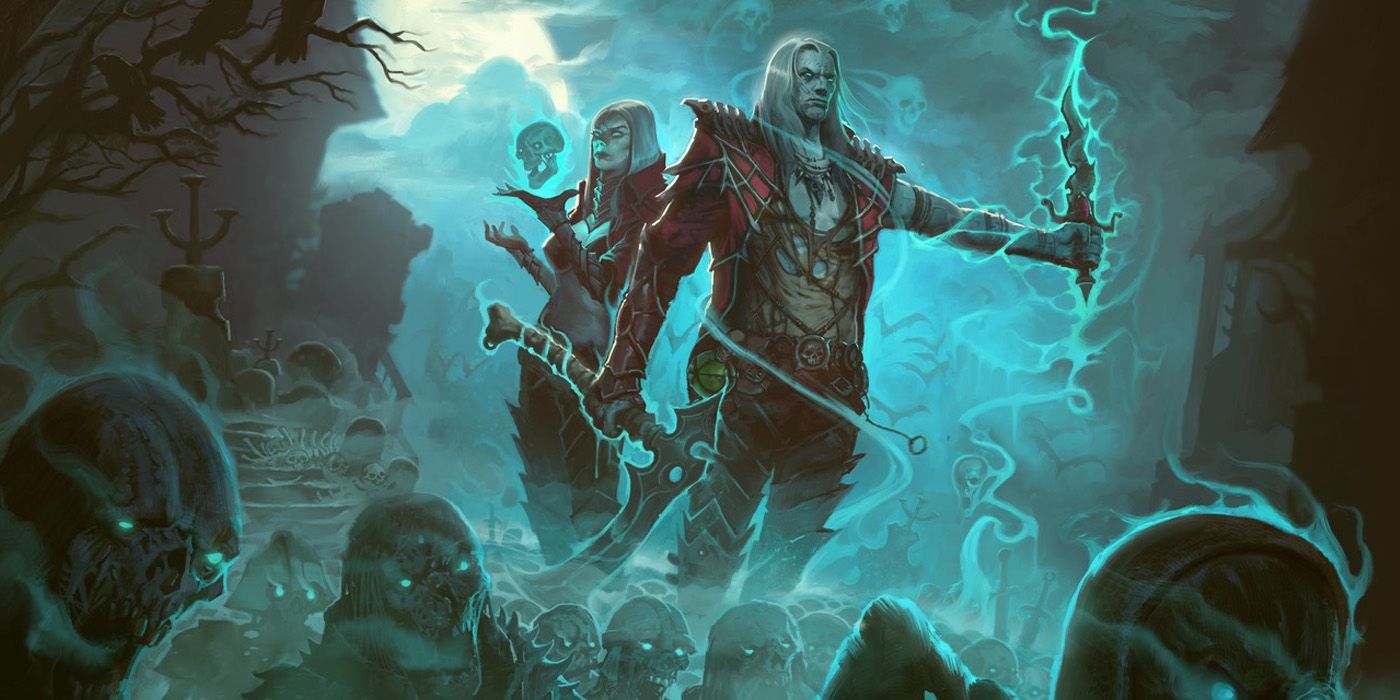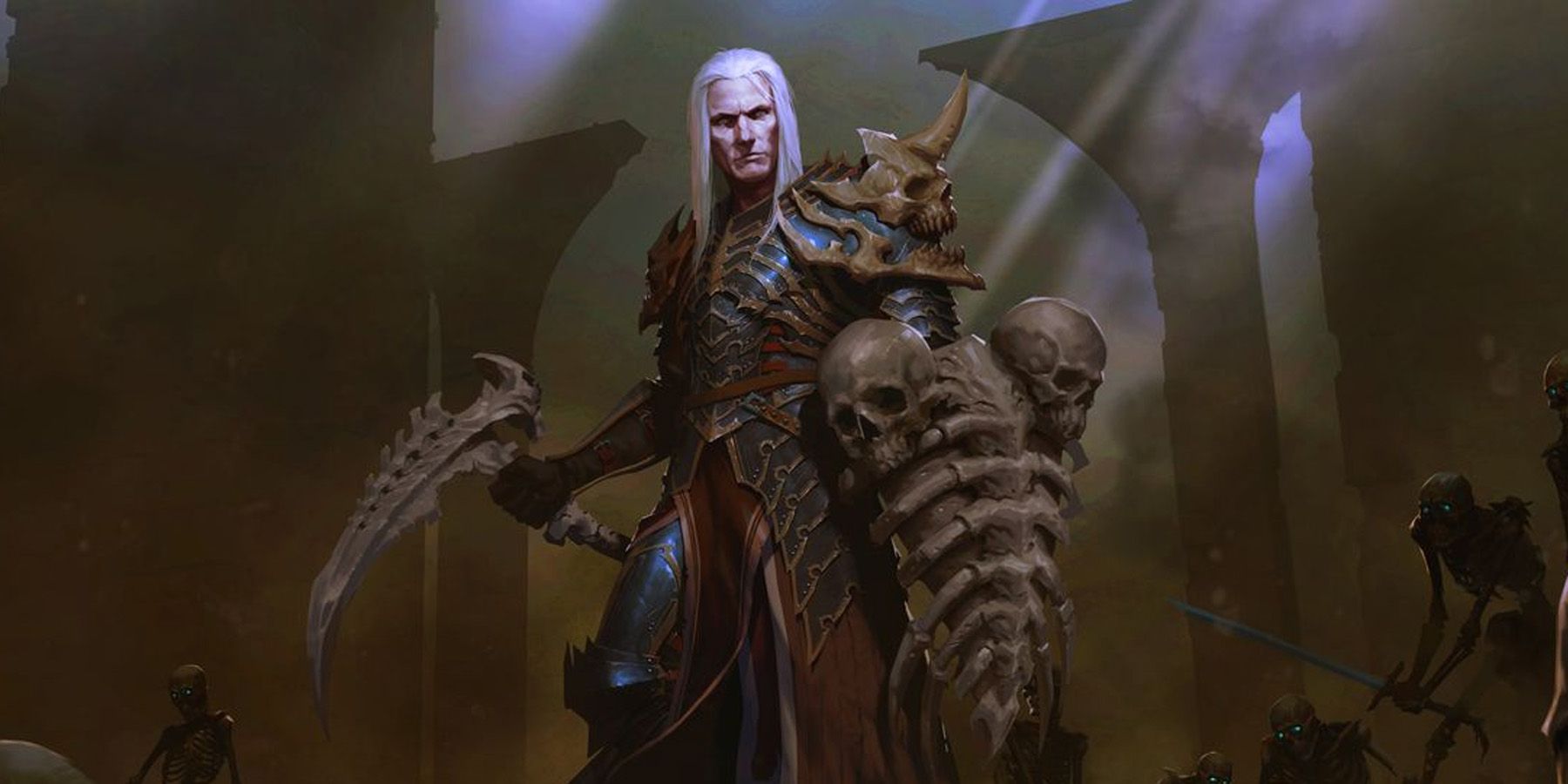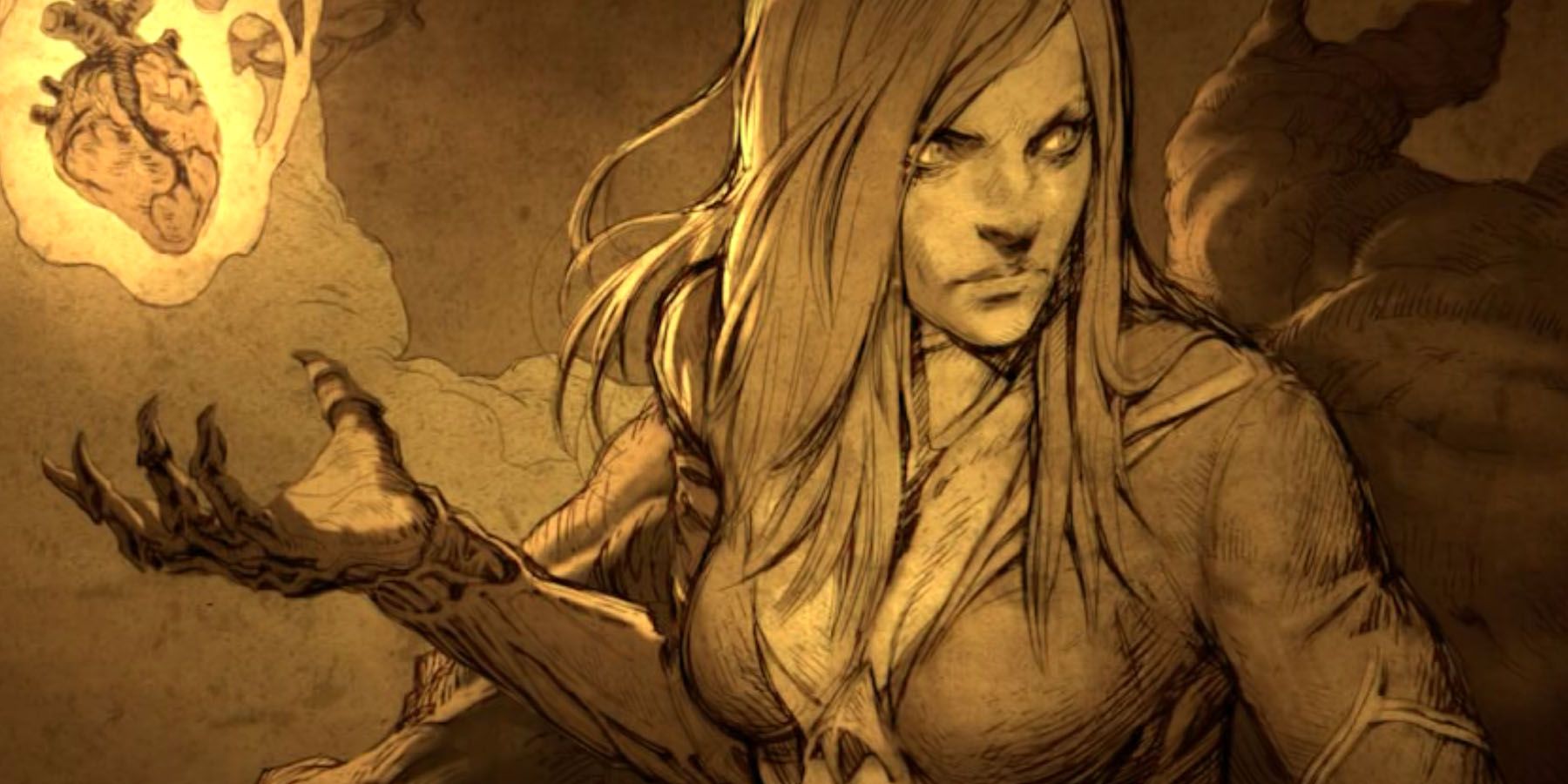When Blizzard released Diablo 2 in 2000, fans immediately clamored for a sequel. After all, there seems to be more to the Diablo franchise after defeating the three Prime Evils. With Diablo and his siblings Mephisto and Baal gone, just what happens to the world of Sanctuary? Thankfully, in 2012, Diablo 3 gives players their much-needed answers. Additionally, it seems Diablo 3 opened the doors to more questions that the player's characters will hopefully be able to resolve.
As with the other Diablo titles, Diablo 3 gives players the option to choose one of seven playable classes. Some of these classes have come from Diablo 2, with some new additions. Interestingly, despite the versatility of these classes, some seem to dominate the rest. Here are the best Diablo 3 classes.
Updated on May 10, 2023, by Rhenn Taguiam: Now that Diablo 4 has gone gold, fans of the acclaimed dark fantasy franchise may be thrilled that facing Lilith and Inarius may be just around the corner. And those who want to sink their teeth into more Diablo content before their arrival may want to give Diablo 3 a shot, especially since some of their Classes will be made available in the upcoming sequel. With that in mind, players may want to learn not just what each of the available Diablo 3 Classes could do and offer but also their recommended playstyles. Knowing these are paramount, especially for players who plan on using the same, or at least similar, Classes in Diablo 4.
7 Demon Hunter
The Demon Hunter will remind Diablo fans of both the Amazon and the Assassin, thanks to their weapon specializations. However, Demon Hunters weren't "raised" by a group to be fighters of evil. Instead, the story of Demon Hunters is that they were once ordinary humans who lost their loved ones to demons - and now they're back with a vengeance. Demon Hunters use crossbows and cloaks to hide while stalking their prey, mercilessly slaughtering them.
Demon Hunters use two resources in battle - Hatred and Discipline. With Hatred, Demon Hunters become merciless and empowered to defeat their foes. It's a quick-generating resource, giving Demon Hunters plenty of opportunities to experiment with their skills. Their second resource, Discipline, builds up much slower.
However, it does grant Demon Hunters more powerful attacks and specialized skills. Others might say Demon Hunters lack that oomph in firepower. However, players simply need to be more calculated with the Demon Hunter. Their arrows can slow down mobs, giving them great crowd control potential. Unfortunately, it takes mastery of their mobility and skill set to fully synergize with the Demon Hunter.
Notable Skills
In order to combat the forces of Hell, Demon Hunters capitalize on their ranged weapons alongside traps and melee attacks. They have a dual resource, called Hatred and Discipline, that becomes the cost of offensive and defensive skills, respectively:
- Hatred: These attacks rely on the Demon Hunter and the effective use of their arsenal. These mainly include ranged attacks (Hungering Arrow, Entangling Shot), areas of effect (Fan of Knives, Grenades, Spike Trap), and even melee maneuvers (Chakram).
- Discipline: These defensive skills aim to protect the Demon Hunter at all costs. These include mobility (Smoke Screen, Vault), buffs (Shadow Power, Marked for Death), and poke damage dealers (Caltrops, Sentry, Companion).
Gameplay: Timing Is Crucial
The Demon Hunter’s main claim to fame is their attachment to humanity, relying on speed and ranged attacks to eliminate demons at a safe distance. This, however, does mean the Demon Hunter can be rather squishy and heavily reliant on their mobility and timing for survival. While their Hatred and Discipline resources are tricky to manage, their constantly-generating nature makes the Demon Hunter the equivalent of Diablo 2’s Amazon or Diablo’s Rogue - newcomer-friendly Classes that unfortunately suffer in more technical setups.
Key to the Demon Hunter’s kit is their vast array of combat options, with a tool built for every scenario. Their Defensive actions are generally relegated to slows, invisibility, and heals that ensure contingencies for high-risk situations. Meanwhile, actions in Hunting and Devices are generally used for setups, either positioning the Demon Hunter or their enemies for combos. Archery offers the Demon Hunter’s best slate of attacks, often serving as finishers or follow-throughs.
6 Crusader
Champions of justice, the Crusader serves as the Paladin's counterpart in Diablo 3. It's revealed that both the Crusaders and Paladins were once companions, eventually separated by their duties. Either way, Crusaders pass down holy judgment with their shields and flails, with the former acting as both a weapon and a means of defense.
Empowered by Wrath, Crusaders use heavenly Light to both buff themselves and eliminate enemies. They can empower their strikes with Wrath, or use the Light to bless themselves and their allies. Despite being a melee class, some Crusader abilities give them decent range thanks to Blessed Shield and Smite. Moreover, given their ability to soak damage and still accumulate heals and buffs, they make far more resilient solo characters compared to Barbarians.
Notable Skills
Being forces of light, a Crusader depends on Wrath as a resource to eliminate the forces of evil. Through Wrath, they can invoke Laws, Convictions, and attacks that deal heavenly justice to their targets:
- Wrath Generators: These basic attacks serve as Wrath generators, primarily giving the Crusader a set of enhanced melee (Punish, Slash) and ranged (Smite, Justice) attacks.
- Wrath Spenders: These basic power attacks serve as heavier skills that aim to obliterate mobs quickly. These include dash attacks (Shield Bash, Sweep Attack), and ranged powerhouses (Blessed Hammer, Blessed Shield, Fist of the Heavens).
- Defensive: These are defensive skills that aim to protect the Crusader, such as stuns (Shield Glare, Judgment), heals (Consecration), and damage absorption (Iron Skin).
- Law: These are dual-purpose skills that have active and passive effects, effectively becoming auras. Valor focuses on attacks, Justice focuses on Defense, and Hope focuses on healing.
- Conviction: Serving as the pinnacle of Wrath, these attacks are extremely powerful abilities. These include calling forth aerial strikes (Bombardment, Heaven’s Fury), a power boost (Akarat’s Champion), or an aerial dive (Falling Sword).
Gameplay: Best Defense Is A Good Offense
Unlike their thematic basis in Diablo 2’s Paladin, the Crusader’s lack of active damage mitigation puts them in a precarious position when it comes to fights against much tougher foes, something that their immense attack speed and generous Wrath resource mechanics circumvent with a high damage output. While the Crusader is a decent-enough Class when played solo, the potential for team play suffers as both tankiness and DPS are negligible when placed beside Classes that specialize in these departments.
Laws become the Crusader’s equivalent of the Paladin’s Auras, each of which provides Crusaders and their allies with buffs that also serve as the basis of their core gameplay. Defensive skills become their key buffer against damage, be it through shields or crowd control. Utility will see the Crusader conjure gimmicks that boost their damage potential via setting up combos, while Conviction serves as mighty finishers.
5 Witch Doctor
The Witch Doctor serves as another new class introduced in Diablo 3. Unlike other classes, not everyone can become a Witch Doctor. Rather, only talented individuals with battle history and the capability of communicating with spirits can become Witch Doctors. Akin to Diablo 2's Druids, Witch Doctors are intimately connected to nature, this time using the spirits of the dearly departed to aid them in battle.
The Witch Doctor uses Mana, a popular resource in the Diablo series. With Mana, Witch Doctors can use hexes and attack spells to devastate enemies. However, they can also summon gargantuan and mongrels to protect themselves and their allies. Witch Doctors offer a diverse set of skills that make them suitable for both solo and team play. Like the Druid, Witch Doctors are extremely versatile characters. However, like the Wizard, Witch Doctors tend to be fragile especially as summoners, and as such need to consider their distance.
Notable Skills
The Witch Doctor can tap into the worlds of both the living and the spirits to combat the forces of evil, providing them with unique ways to approach combat:
- Physical Realm: These skills allow the Witch Doctor to directly engage enemies in physical combat. The Witch Doctor can use Mana to unleash elemental abilities like Poison Dart, Firebomb, and Acid Cloud. Meanwhile, they can also summon otherworldly creatures to do their bidding, such as Plague of Toads, Zombie Charger, Corpse Spiders, and Firebats.
- Spirit Realm: These skills allow the Witch Doctor to tap the spiritual realm for more horrifying abilities. These include utility skills such as escapes (Spirit Walk), buffs (Soul Harvest), debuffs (Mass Confusion), and areas of effect (Haunt, Spirit Barrage).
Gameplay: Minions Can Do The Work
Replacing Diablo 2’s Necromancer when it comes to having minions is the Witch Doctor, whose Mana resource is more than enough for constant summons but also slowly regenerating that it requires careful management. Being able to task their summons to do much of the work means the Witch Doctor almost always has an opening to regenerate Mana, but they’re left virtually defenseless. The Mana-reliant nature of the Witch Doctor can make them somewhat fragile in fast-paced setups.
All of the Witch Doctor’s actions have a means of summoning creatures or forcing enemies to fight on their behalf, especially within Voodoo. Their slate of Defensive actions helps the Witch Doctor evade combat through backup, teleports, or crowd control. Enemies are hexed further with Terror skills that focus on halting their progress, leaving them wide open for Decay skills concentrating on damage-over-time Poisons.
4 Wizard
Wizards in Diablo 3 are the game's counterparts to the Sorceress class in Diablo 2. Not only do they belong to separate classes of spellcasters, but they are also familiar with the workings of their other magic-user comrades. Wizards possess flair and are natural rebels, and as such show disdain over the strict nature of their studies. However, they do have a natural talent for magic, capable of using powerful spells.
Contrary to other spellcasters, Wizards use raw Arcane Power. This resource regenerates quickly, enabling Wizards to cast weaker spells that can still pick off multiple enemies. They have a natural mastery over the elements, giving them access to fire, lightning, and frost spells. Moreover, they have a healthy mix of AOE and protective spells, making them great support characters.
Unlike other classes, there's no doubt the Wizard reigns in terms of sheer DPS. Unfortunately, their weak constitution does make them glass cannons, capable of dying just as fast as they can kill their enemies. As such, Wizard users need to be careful with the timing of their spells, especially when enemies try to get close.
Notable Skills
Unlike other spellcasters, Wizards are designed to be more fast and loose with their spellcasting. Their abilities rely heavily on crowd control, debuffers, and defensive abilities to survive wave after wave of enemies:
- Primary and Secondary Skills: These skills are often used as direct generators of Arcane Power, and the most straightforward damage-dealers. These include Arcane Power fillers like Magic Missile or Secondary power attacks like Arcane Orb.
- Force: These skills are heavy hitters and often try to overwhelm enemies in a variety of ways. Some skills constantly spam attacks (Hydra), last long (Blizzard, Energy Twister), or land a powerful attack (Meteor).
- Defensive and Conjuration: These skills give Wizards a keen edge when it comes to defending themselves and staying out of trouble. These include mobility (Teleport, Slow Time), armors (Ice Armor, Energy Armor).
- Mastery: These skills are the pinnacle of a Wizard’s power, offering various endgame options. Mirror Image duplicates the Wizard and its powerful attacks, Explosive Blast rains fiery armageddon, and Archon is a temporary power boost.
Gameplay: High Energy, High Costs
The Wizard is the equivalent of the glass cannons in Diablo’s Sorcerer and Diablo 2’s Sorceress, this time tapping into an ample supply of Arcane Power to cast debilitating elemental attacks. Despite the robust nature of their roster, the Wizard’s spell does cost quite a lot of Arcane Power, requiring careful management lest risk extremely fragile defenses. However, the Wizard does have a fair number of survival options in emergencies, making their nature as fragile but effective AOE damagers rather promising for some builds.
Much of a Wizard’s build is centered around what Mastery they choose, serving as “ultimates” that turn the tide of battle for a few seconds after already-devastating attacks under Force. Afterward, their Defensive actions give them access to teleports, crowd control, and slows that help with damage mitigation. Their Conjuration skills give nifty assets such as shields and attack buffs to aid survivability further.
3 Barbarian
The Barbarians return from Diablo 2, but this time without a home. Regardless of being separated from their kin, the Barbarian in Diablo 3 remains as ruthless and stalwart as ever. Moreover, due to their nature, they wield large weapons to battle - and some Barbarians wield two-handed weapons on each arm.
Powered by Fury, Barbarians generate energy whenever they damage foes and when they get hit. Moreover, they use Fury to unleash deadly blows and cleaves, as well as leaps that shatter the ground beneath them. As such, players love the Barbarian for their straightforward nature.
Aside from being one of the easiest classes to get into Diablo 3, it's also one of the most flexible in terms of builds. Given their penchant for straightforward fighting, fans love the Barbarian for their sheer muscle. Revenge, Rend, and Frenzy easily build a Barbarian tank capable of taking on aggro and still living to fight another day.
Notable Skills
Being a deadly damage dealer, Barbarians need ways to generate Fury and spend it properly to wreak havoc on the battlefield as much as possible:
- Fury Generators: These skills help the Barbarian build Fury quickly. These often come in the form of basic attacks that demonstrate the Barbarian’s strong base attacks. A lot of Fury Generators rely on stuns and knockbacks (Bash, Ground Stomp, Ancient Spear), areas of effect (Leap, Furious Charge), and stat boosters (Frenzy, War Cry).
- Fury Spenders: These skills are more versatile compared to generators, as they use Fury to achieve a myriad of effects. These include buffs (Battle Rage, Sprint), debuffs (Threatening Shout, Rend), and sheer offensive power.
Gameplay: Fury Is The Key
Compared to most Classes in the game, the Barbarian has a somewhat ironic approach to encounters wherein it needs to engage enemies constantly but is relegated mostly to a tank-support role. Key to this is the Fury Resource that deteriorates whenever the Barbarian stays away from combat. The right combination of items (e.g., The Gavel of Judgment, Bul-Kathos’ Oath) and skills (e.g., Unforgiving, Animosity, War Cry) can constantly generate Fury for the Barbarian’s use. It’s this self-sustaining, heavy-damage nature that makes the Barbarian an effective Solo Class but a bit lacking in PVP.
The Barbarian’s toolkit is heavily reliant on Might actions that dish heavy AOE damage with crowd control penalties supplemented by boosts from Rage and Tactics skills. Meanwhile, the Barbarian’s Defensive abilities either bolster their defenses or allow them to navigate the battlefield to transition from one fight to the next, perpetuating an eternal cycle of combat.
2 Monk
Monks serve as one of the new classes introduced in Diablo 3. A mixture of the Paladin and the Assassin, the Monks are holy warriors with bodies and minds tempered to face the forces of evil. Thanks to their weapon training, Monks specialize in using Fist Weapons and the Daibo, capable of eliminating foes quickly.
Monks serve as one of the more complicated classes to play, as their Spirit resource can only be regenerated with certain attacks, skills, and combos. However, the sheer versatility of their skills enables them to mess around with foes quickly. Their special combos grant Monks special effects, and their Mantras can buff them and their comrades.
As such, Monks remain one of the most versatile classes in the game. They're capable of being tanks with Blinding Flashes and Crippling Waves. However, they can also assume crowd control with Cyclone Strike and Dashing Strike. They can also become great healers, especially with Chant of Resonance. This versatility makes them great for both beginners and pros.
Notable Skills
Masters of the body, the Monk capitalizes on both speed and strength to overwhelm foes. Coupled with their keen eye for strategy and aura bonuses, Monks can use Spirit to dominate the battlefield quickly with their skills:
- Spirit Generator: These skills help Monks generate Spirit via unleashing combos. These include powerful punches (Fists of Thunder), sweeps (Crippling Wave), dashes (Way of the Hundred Fists), weapon sweeps (Sweeping Wind), and force blasts (Deadly Reach).
- Spirit Spender: With enough Spirit, Monks can rely on special skills that highlight their martial prowess. These include stuns (Blinding Flash, Lashing Tail Kick), buffs (Breath of Heaven, Inner Sanctuary, Serenity), ranged attacks (Dashing Strike, Tempest Rush, Seven-Sided Strike, Wave of Light), and minions (Lethal Decoy, Mystic Ally).
- Mantras: These are auras that augment the Monk’s base abilities, such as life regeneration (Mantra of Healing), a damage buff (Mantra of Conviction), or evasive maneuvers (Mantra of Evasion).
Gameplay: Elaborate Physical Supremacy
Unlike the tanky Barbarian, the physical proximity of the Monk is supplemented by a healthy combination of movement and attacks that put them at the peak of DPS-based solo play. Their primary resource is Spirit which regenerates naturally through combat, supplemented by their heavy reliance on combos. Their builds center around Mantras, granting an assortment of buffs that focus on dealing damage, regenerating health, or boosting resistance.
Survival for Monks is determined by their Defensive skills, proving their resilience through shields or emergency heals. Meanwhile, the core of their combos is spread across Techniques and Focus, both of which enable the Monk to rely on wide-reaching AOE attacks or dash-based hits for constant damage and Spirit regeneration. This fast-paced play can make the Monk a more enjoyable melee Class, with the versatility of their mobility and combo options making them viable in a lot of game modes.
1 Necromancer
The Necromancer from Diablo 2 returns in Diablo 3. And despite their heroics in the battle against the Prime Evils, Necromancers are still reviled for their usage of death magic. However, the Necromancer's mastery of the cycle of Life and Death enables them to use the very forces of darkness against themselves. They use scythes, curved blades, and phylacteries that enhance their abilities.
Necromancers use Essence, the very fabric of life itself. They harvest Essence only through enemies, making them one of the more complicated classes to play. However, they do possess a lot of abilities. They can summon the undead that follows their bidding. Moreover, they can use blood and bone to destroy and stop enemies in their tracks. Necromancers have great crowd-control potential, making them perfect for both solo and group play.
Like the Wizard, the Necromancer boasts great AOE spells. Moreover, its crowd control potential skyrockets thanks to its skeletons. However, unlike the other classes, the Necromancer seems to be the most technical. Despite its vast potential in team play, Necromancer players need to be wary of how they work with their comrades.
Notable Skills
The Necromancer taps on Essence, the very thing that binds all of reality. Depending on the purpose, a Necromancer can call forth blood, bone, and curses to eliminate all who stand in their way:
- Essence Generators: These primary skills generate Essence through a variety of methods, such as lifesteal (Siphon Blood), ranged attacks (Bone Spikes), or a melee strike (Grim Scythe).
- Essence Spenders: These power attacks give Necromancers that oomph to eliminate foes. These include piercing spears (Bone Spear), a wave of poison (Death Nova), and a Skeletal Mage.
- Corpses: Necromancers can do a wide variety of things with corpses, such as make them explode (Corpse Explosion), become a ranged attack (Corpse Lance), healing (Devour), and skeletal minions (Revive).
- Reanimation: Necromancers can do a wide variety of resurrections, such as summoning skeletons (Command Skeletons, Army of the Dead), summoning golems (Command Golem), and reanimation spam (Land of the Dead).
- Curses: When activated, Necromancers can bestow debuffs to enemies such as slow (Decrepify), lifesteal (Leech), and instant-kills at 15-percent health (Frailty).
- Blood and Bone: These are utility abilities that let Necromancers create duplicates (Simulacrum), teleport (Blood Rush), a burst attack (Bone Spirit), and armor creation (Bone Armor).
Gameplay: Death Is Wealth
Becoming the master of life and death means bargaining in the pursuit of power, and such is the fickle balance the Necromancer is balancing in-game. The Necromancer heavily relies on Essence that is only extracted from dead opponents and their own Life to trigger various effects. Despite this dangerous resource-balancing, the Necromancer’s capabilities of pushing back against foes with a dash of self-sustains and debuffs make them an efficient all-rounder across different game modes.
The Necromancer’s trademark minions are relegated to the Reanimation actions, where they can summon an array of undead for various purposes. Aside from reanimation, the Necromancer can also do an assortment of things to dead bodies via Corpses, using themselves for health or for offense. Curses offer the Necromancer’s standard assortment of debuffing hexes, whereas Blood & Bone can provide defenses such as a nifty teleport, a body double, and even armor.
Diablo 3 was released on May 15, 2012, and is available on PC, PlayStation 4, Xbox One, Nintendo Switch, and last-gen consoles.

